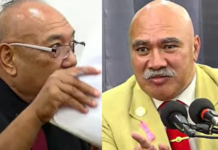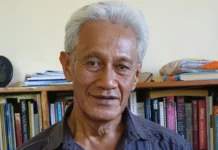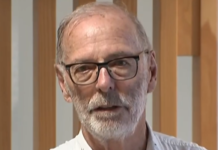‘Oku taupotu ‘i lalo ha fakamatala faka-Tonga
China faces yet another wave of COVID-19 infections that could lead to millions of new cases nationwide.
The grim forecast was revealed by Zhong Nanshan, a respiratory disease specialist, at a medical conference this week in China’s southern city of Guangzhou.
Zhong was reported by Chinese state media saying that China could be approaching 40 million infections per week. By the end of June, the weekly number of infections could surge to 65 million, NBC News reported.
The surge comes about six months after the country dismantled its sprawling infrastructure for dealing with Covid, including harsh lockdowns, mass testing, stifling quarantines and strict mask requirements.
“People feel differently about this wave,” said Qi Zhang, 30, who works at a finance company in the northern city of Tianjin. “The last time, everyone was terrified, but now they don’t think it’s a big deal,” she told NBC News on Thursday.
According to state media, he told the audience that the wave that started in late April was “anticipated,” and that his modeling suggested China could be approaching 40 million infections per week. By the end of June, he said, the weekly number of infections will peak at 65 million.
The United States, by comparison, was reporting more than 5 million cases a week at its peak last January. Like the U.S., China stopped providing weekly case updates this month, making it difficult to know the true extent of the current outbreak.
The State Department said the U.S., which imposed a testing requirement on travelers from China in January before lifting it in March, was discussing China’s second Covid wave with allies and partners but declined to say whether travel restrictions were under consideration. Spokesperson Matt Miller said the department would monitor the situation in conjunction with the Centers for Disease Control and Prevention before updating travel guidelines.
“We don’t want to see people anywhere, obviously, suffering from Covid-19,” Miller said Wednesday. The U.S. government remains committed to working with China “on transnational challenges, including on global health matters and maintaining open lines of communication,” he added.
FAKAMATALA FAKATONGA
Kuo toe fehangahangai ‘eni ‘a Siaina mo ha toe ākenga fo’ou ‘o e Koviti-19 ‘e ala uesia ai ha laui miliona he fonua fakakātoa.
Ko e vavalo fakamanavahē ko eni ne fakaha ia ‘e Zhong Nanshan, ko ha taukei makehe ‘i he mahaki ki he ma’ama’a ‘i he konifelenisi fakametikale he uike’ ni ‘i he citi ko ia ‘i he saute ‘o oSiaina ko Guangzhou.
Pehē ‘e Zhong ‘e a’u ki he kakai ‘e toko 40 miliona ‘e uesia heni he uike. ‘I he faka’osinga ‘o Sune’ ‘e a’u ‘a e pihia fakauike ki he toko 65 miliona.
Ko e matua mai ko eni hili ia ha mahina ‘e ono hili hono veteki ‘e he fonua ‘a e ngaahi ‘inifalakisā ne langa ke tau’i’aki ‘a e Koviti, kau ai ‘a e ngaahi loka, tesi fakatokolahi tu’utu’uni’i fefeka, ko e kolonitini mo e tu’utu’uni fefeka ke ‘ai ‘a e masaki.
Na’a ne fakaha ki he mitia ko e akenga ko ‘eni ne kamata ia ‘i he konga ki mui ‘o ‘Epeleli pea na’e ‘osi fai pe ‘a e ‘amanaki ki ai pea ko hono motolo kuo fa’u ko eni kuo ne fokotu’u mai ‘e ofi ‘a kinautolu ‘e pihia ‘i Siaina ‘i he toko 40 miliona he uike. I he uike faka’osi ‘o Sune ‘e a’u ‘a e phia ki he 65 miliona.
Fakahoa ‘eni ki ‘Amelika’ na’e lipooti ‘a e keisi laka hake ‘i he toko 5 miliona he uike ko e lahi taha ‘i Sanuali. Hange pe ko Amelika, na’e ta’ofi ‘e he Siaina hano toe fakalamuiaki fakauike ‘enau ngaahi keisi ‘i he mahina ni ‘o faingata’a ai ke ‘ilo ‘a e tu’unga totonu oku lolotonga ‘i ai ‘a e to’umahaki.
Pehe foki mei he State Department na’e hilifaki ‘e US ‘a e fiema’u ke tesi ‘a e kau folau mei Siaina ‘i Sanuali ki mu’a pea to’o ‘i Ma’asi. Pehe foki mei US na’a nau lolotonga alea’i mo Siaina ‘enau akenga hono ua fakataha mo e ngaahi ‘ālai mo e ngaahi paatinaa’ ka ne ‘ikai tali ha tali ki he fehu’i pe nau toe fakakaukau’i ha loka fakavaha’afonua.
Pehē pe mei he tipaatimeni oku fai hono monitoa ‘o e me’a ‘oku hoko’ fakataha mo e Centers for Disease Control and Prevention ki mu’a hano tuku mai ha talamuiaki fekau’aki mo e kau fefolau’aki.







